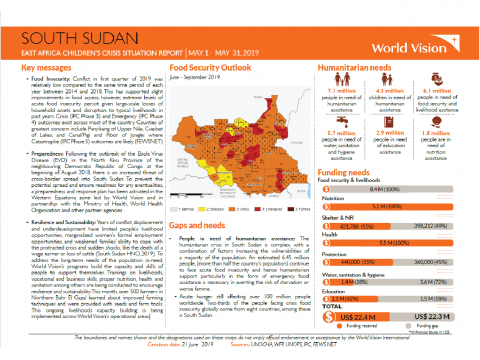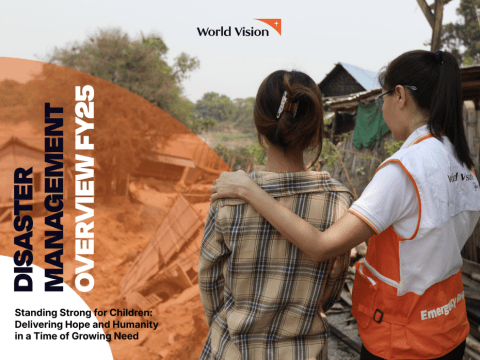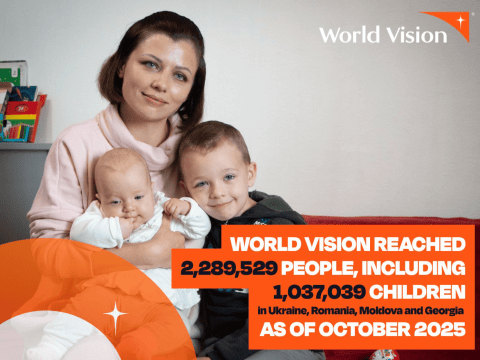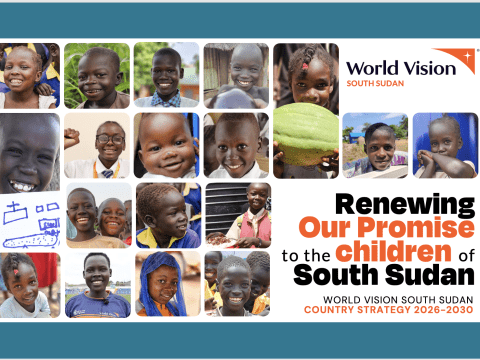South Sudan - May 2019 Situation Report
Download
- Food security: Conflict in first quarter of 2019 was relatively low compared to the same time period of each year between 2014 and 2018. This has supported slight improvements in food access; however, extreme levels of acute food insecurity persist given large-scale losses of household assets and disruption to typical livelihoods in past years. Crisis (IPC Phase 3) and Emergency (IPC Phase 4) outcomes exist across most of the country. Counties of greatest concern include Panyikang of Upper Nile, Cueibet of Lakes, and Canal/Pigi and Pibor of Jonglei where Catastrophe (IPC Phase 5) outcomes are likely. (FEWSNET)
- Preparedness: Following the outbreak of the Ebola Virus Disease (EVD) in the North Kivu Province of the neighbouring Democratic Republic of Congo at the beginning of August 2018, there is an increased threat of cross border spread into South Sudan. To prevent the potential spread and ensure readiness for any eventualities, a preparedness and response plan has been activated in the Western Equatoria zone led by World Vision and in partnership with the Ministry of Health, World Health Organisation and other partner agencies.
- Resilience and sustainability: Years of conflict, displacement and underdevelopment have limited people’s livelihood opportunities, marginalized women’s formal employment opportunities, and weakened families’ ability to cope with the protracted crisis and sudden shocks, like the death of a wage earner or loss of cattle (South Sudan HNO, 2019). To address the long-term needs of the population in-need, World Vision’s programs build the capacity and skills of people to support themselves. Trainings on livelihoods, vocational and business skills, proper nutrition, health and sanitation among others are being conducted to encourage resilience and sustainability.
Share



